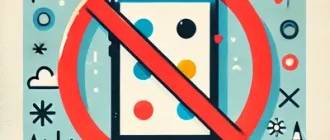Swollen or puffy eyes in babies occur when fluid builds up around the delicate tissues of the eyelids, causing visible puffiness or swelling. It’s like when a soft sponge absorbs too much water — the area becomes tender, rounded, and sometimes reddish. This condition can be harmless and temporary, or it may signal an underlying irritation or infection that needs attention.
Swollen or slightly puffy eyes in babies often appear after crying, minor allergic reactions, or mild infections. According to pediatric data, mild eye swelling affects up to 20% of infants at some point, most commonly due to blocked tear ducts or allergies. In rarer cases, bacterial or viral infections such as conjunctivitis may also contribute to the swelling, especially when accompanied by redness or discharge.
After sleep or exposure to dust, when a parent notices puffiness around their baby’s eyes that doesn’t fade quickly, it’s a sign worth observing closely. Understanding why these symptoms occur, how to tell a harmless puffiness from an infection, and what gentle care options exist can help ensure your baby’s comfort and eye health.
Common Causes of Swollen or Puffy Eyes in Children

There are several reasons why a child’s eyes might become swollen or puffy. Here are some of the most common causes:
| Cause | Description |
|---|---|
| Allergies | Allergic reactions to pollen, dust, pets, or certain foods can cause eye puffiness due to inflammation. |
| Infections | Conditions like conjunctivitis (pink eye) or sinus infections can lead to swollen eyes. |
| Insect Bites | Mosquito bites or other insect stings near the eyes can cause localized swelling. |
| Injury or Trauma | A bump or blow to the eye area can result in swelling as part of the body’s natural healing process. |
| Crying or Lack of Sleep | Prolonged crying or insufficient sleep can cause fluid retention around the eyes, leading to puffiness. |
| Chalazion or Stye | Blocked oil glands in the eyelid can cause small lumps that may swell, leading to puffy eyes. |
| Kidney Issues | Though rare, kidney problems can cause fluid retention, including around the eyes, leading to persistent puffiness. |
| Hereditary Factors | Genetics can play a role, and some children may naturally have puffier eyes, especially after waking up or when they are tired. |
Real-Life Case Scenarios
Case 1: The Allergic Reaction
Scenario: Emma, a 5-year-old, suddenly developed puffy eyes after playing in the park. Her eyes were itchy, and she couldn’t stop rubbing them. Her parents initially thought it was due to fatigue but noticed the puffiness getting worse.
Solution: After consulting with a pediatrician, Emma was diagnosed with a pollen allergy. The doctor recommended antihistamine eye drops and advised the parents to keep windows closed during high pollen days and to ensure Emma washed her hands and face after outdoor play.
Outcome: Emma’s symptoms improved significantly with the antihistamine drops, and her parents now manage her allergies proactively during pollen season.
Case 2: The Persistent Chalazion
Scenario: Jack, an 8-year-old, had a small, painless lump on his upper eyelid that slowly grew and caused the entire lid to swell. Despite warm compresses, the swelling didn’t subside after a week.
Solution: A visit to the ophthalmologist confirmed it was a chalazion, a blocked oil gland. The doctor recommended continuing warm compresses and prescribed a mild antibiotic ointment.
Outcome: After two weeks of treatment, the swelling reduced, and the chalazion gradually disappeared. Jack’s parents were advised to keep an eye on any future occurrences and maintain good eyelid hygiene.
Case 3: The Unnoticed Infection
Scenario: Lily, a 6-year-old, complained of discomfort in her left eye. Her parents noticed the eye was slightly red and swollen, but they assumed it was due to tiredness after a busy weekend. However, the next day, her eye was completely swollen shut.
Solution: A quick visit to the emergency room revealed that Lily had developed a bacterial infection known as preseptal cellulitis. She was prescribed oral antibiotics, and her parents were instructed to monitor the swelling closely.
Outcome: Within 48 hours, the swelling began to decrease, and Lily fully recovered after completing her antibiotic course. Her parents now know the importance of acting quickly when swelling is accompanied by redness or pain.
When to See a Doctor
While mild puffiness around the eyes can be normal, there are certain symptoms that should prompt an immediate visit to a healthcare provider:
- Persistent or worsening swelling
- Redness, pain, or warmth in the swollen area
- Discharge from the eyes
- Changes in vision
- Swelling that spreads to other parts of the face
These symptoms could indicate a more serious condition that requires prompt medical attention.
Practical Tips for Managing Puffy Eyes at Home
- Cold Compress: Applying a cold compress can help reduce swelling by constricting blood vessels.
- Elevate the Head: Ensure your child sleeps with their head slightly elevated to prevent fluid accumulation around the eyes.
- Allergy Management: If allergies are the culprit, using hypoallergenic bedding, keeping windows closed during high pollen days, and regular cleaning can help.
- Hygiene: Teach your child not to rub their eyes and to wash their hands frequently to avoid transferring irritants to the eyes.
- Adequate Rest: Make sure your child gets enough sleep, as tiredness can exacerbate puffiness.
Conclusion
Swollen or puffy eyes in children can be alarming, but understanding the potential causes and knowing when to seek help can make a significant difference. With the right care and attention, most cases can be managed effectively, allowing your child to return to their normal, happy selves quickly.
If you notice persistent or severe symptoms, don’t hesitate to consult with an eye specialist to ensure your child’s vision and overall eye health are well-protected.





